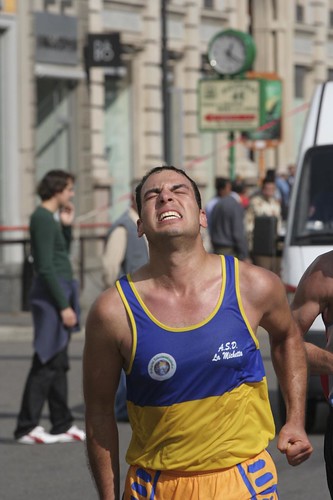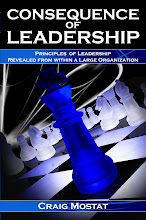 I respect people that run (jog) for exercise. It indicates that they are making smart choices in all areas of their life for the benefit their health. What I don't understand is why people run with knee braces on? It's not that I think it looks bad or anything like that, but a knee brace is an indication of an underlying problem – like a knee injury – or more to the point - pain!
I respect people that run (jog) for exercise. It indicates that they are making smart choices in all areas of their life for the benefit their health. What I don't understand is why people run with knee braces on? It's not that I think it looks bad or anything like that, but a knee brace is an indication of an underlying problem – like a knee injury – or more to the point - pain!Recently, I witnessed a guy running on the grass (people run on the grass to reduce the pain they feel because it is softer and generates less impact than running on concrete), with knee braces on both knees. Our bodies speak to us through pain. We learn this early in life. The child that touches the hot stove instantly learns not to do it again. If I hit myself in the head with a hammer, the pain that I experience makes me question whether I want to try it again. "No pain – no gain" has obviously been misunderstood.
What does this have to with leadership?
Leaders must make decisions that often cause discomfort. Exercise is uncomfortable to our bodies in the same way that change is uncomfortable to our routines and habits. The soreness and pain from change in business and/ or a physical workout goes away in time – it gets easier and easier until it becomes normal. Further challenge repeats the cycle and we continually elevate our capacity.
However, sometimes we make decisions that cause unhealthy pain. The pain experienced by a runner from a damaged knee, will not go away by continuing to run on it. The pain caused to an organization by a hasty, or unwise decision will not go away by continuing to stick with it. Leaders must understand the difference between the beneficial, short-term, discomfort of healthy decisions and the damaging, intensifying pain of unhealthy decisions.
It is never too late to reverse our decision, but it will usually mean that we have to swallow some pride. I.e.: Can't run anymore.
To the runners with the knee braces: There are many other ways to get a good cardiovascular workout that will still allow you to walk after the age of 60.
Photo by: cesareb




Exercise is uncomfortable to our bodies in the same way that change is uncomfortable to our routines and habits.
ReplyDelete